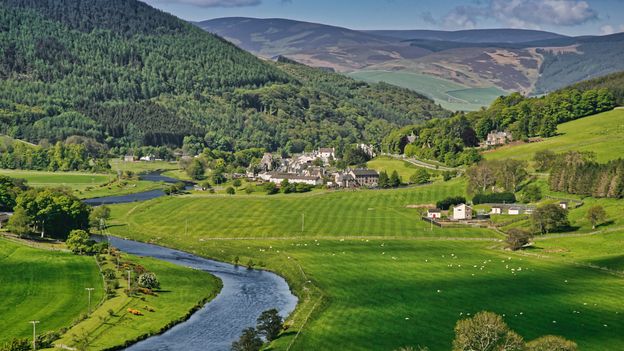Inside, Traquair is a maze of wood carvings, tapestries and eye-catching artefacts such as rare Jacobite glasses and wooden stilts that were used to cross the river back when local bridges were less numerous.
Traquair estate actually altered the course of the Tweed by a few hundred metres in the late 1600s, when it was believed the river was damaging the foundations of the house. In one of Traquair’s chapels, you can still find a trapdoor (in a cupboard, behind a bookshelf) that would have led out to the waterway. The idea was that, should a Protestant mob arrive in an angry furore – which did happen over the centuries – any resident priest would’ve been able to escape out to the river and sail away.
I strolled (rather than fled) back to the river to meet Kerr, and we headed off on stage two of the trail, paddling past Plora Wood‘s native oak woodland – today a rarity in the Borders. With the current on our side, the paddling became meditative and methodical, with forestry, farmlands and the ruins of old peel towers coming and going with the river bends.
Day two ended among wild garlic and daffodils near Peel, a tiny hamlet on the edge of Yair Forest, where the 500-year-old Glenkinnon Oak stands strong. There are fine wild camping spots here, but instead I sought solace in the nearby Clovenfords Hotel, guarded by a statue of Sir Walter Scott.
More like this:
• Britain’s most remote mainland pub
• A world-first in the Scottish Highlands
• How humble oats have fuelled a nation
Our final day of paddling took us seven miles to Scott’s legendary country house. It was a day of rapids, the most notable of which came beneath the scenic stone Fairnilee Bridge, built back in 1764. “It’s unlikely we’ll tip over,” Kerr said reassuringly, “but we’re definitely going to get wet.” I didn’t have too much time to appreciate the local architecture before the white water hit.










